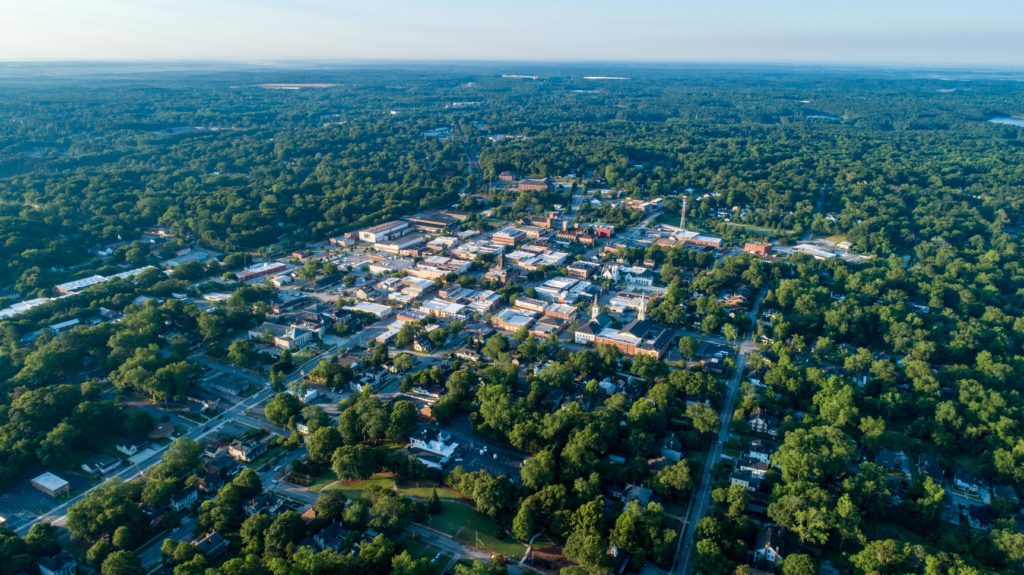
The four-year graduation rate for Coweta County School System high school students rose to 91.6 percent in 2020, with over 90 percent of seniors graduating on-time from all three Coweta high schools.
That reflects a more than 4 percentage point rise over Coweta County’s 2019 on-time graduation rate of 86.9 percent. It is also approximately 8 percentage points higher than the state of Georgia’s average, which rose to an all-time high of 83.8 percent in 2020, according to a graduation report released by the Georgia Department of Education on Tuesday.
Above is a three-year trend chart comparing Coweta County School System
and state of Georgia graduation rates.
The “Adjusted Cohort Graduation Rate” – also called the “on-time” graduation rate – measures the percentage of students who enter high school together as freshmen (the ‘cohort’) who then go on to earn a diploma within four years. The calculation of the rate adjusts for student transfers. Students who don’t graduate in that cohort may still go on to meet graduation requirements with additional semesters of coursework.
Georgia’s graduation rate increased in 2020, rising to 83.8 percent – an all-time high since the state began using the adjusted cohort calculation now required by federal law, and up from 82 percent in 2019. Georgia’s graduation rate has increased by 14.1 percentage points since 2012, with steady increases each year.
According to the Department of Education, part of this year’s increase in graduation rate can be attributed to a waiver GaDOE received from the U.S. Department of Education in 2019. Beginning with this cohort of students (2020 graduates), the waiver allows the state to count students with the most significant cognitive disabilities – those assessed with the Georgia Alternate Assessment, approximately 1% of students overall – in the four-year graduation rate the year they graduate, even if that is more than four years after they begin high school.
In 2020, this change allowed for the cohort of approximately 1,000 students to be reassigned. This accounts for only a portion of this year’s increase. If those students’ cohort had not been reassigned, the graduation rate would have increased by 1.09 percentage points, as opposed to 1.80, according to state reporting.
All three Coweta County high schools showed increases in their 2020 graduation rates. Northgate High School posted a 2020 graduation rate of 93.3 percent, Newnan High a rate of 92.4 percent and East Coweta High a rate of 90.2 percent.
Coweta County’s 2020 rate was the highest for the county ever, rising above the 2019 rate of 86.9 percent, which was the previous high. Coweta County’s overall rate has remained higher than the state average despite having higher graduation standards than many other school systems in the state. Due to block scheduling, Coweta County School System’s high school students must earn a total of 28 credits over four years to graduate high school, compared to 23 credits for many school systems.
“ I am delighted to see that graduation rates for Coweta County School System students continue to increase,” said Coweta Superintendent Evan Horton. “Having all of our high schools achieve graduation rates above ninety percent is indicative of a tremendous amount of hard work by the dedicated students, teachers and employees of our school system. These rates represent the success of the Coweta County School System, at all grade levels, in empowering students for success in school and in life.”
Coweta high schools have used a number of strategies and supports to increase graduation rates throughout that time, including:
- Relevant and challenging instruction by high-quality teachers.
- Individual graduation plans for each student closely monitored by faculty.
- Online credit recovery opportunities for students who encounter difficulty in classes, and content-based support and Saturday school opportunities.
- Tutoring available during the day and before and after school.
- Students-support services outside of the classroom including counseling and staff advisors, online facilitator, Community in Schools and community mentors.
- Community in Schools partnerships working with the most at-risk students.
- Screening for students in math and ELA starting as they transition from 8th to 9th grade and continuing each grading period throughout a student’s time in high school.
- Emphasis on 9th grade readiness and careful scheduling of students
- Innovative scheduling opportunities, including literacy and math focus as well as accelerated and advanced learning opportunities through the Central Educational Center, dual-enrollment opportunities and work-based learning.
- Organizing professional learning communities for teachers and monitoring the impact of those opportunities by department and content area.
- Content nights for parents to encourage family awareness and support for student’s graduation requirements, high school scheduling and academic content.





